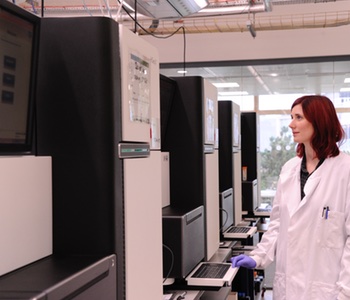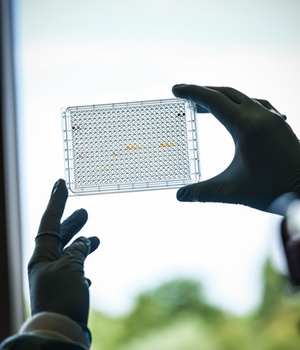In one of the largest studies of its kind, researchers have used CRISPR technology to disrupt every gene in over 300 cancer models from 30 cancer types and discover thousands of key genes essential for cancer’s survival.
The team, from the Wellcome Sanger Institute and Open Targets, then developed a new system to prioritise and rank the 600 drug targets that showed the most promise for development into treatments.
The results, published today in Nature, accelerate the development of targeted cancer treatments and bring researchers one step closer to producing the Cancer Dependency Map, a detailed rulebook of precision cancer treatments to help more patients receive effective therapies.
Dr Kosuke Yusa, co-lead author previously from the Wellcome Sanger Institute and Open Targets, now based at the Institute of Frontier Life and Medical Sciences, Kyoto University, said: “CRISPR is an incredibly powerful tool that enables us to do science at a scale and with a precision that we couldn’t do five years ago. With CRISPR we have discovered a very exciting opportunity to develop new drugs targeting cancers.”
High cost: Low reward

Every two minutes someone in the UK is diagnosed with cancer, and one in two people will develop cancer at some point in their lives. Surgery, chemotherapy and radiotherapy are commonly used to treat cancer, however, while they can be effective at killing the cancer cells, some patients don’t respond to treatment and healthy tissue can be damaged, leading to unwanted toxic side effects for patients.
Scientists and pharmaceutical companies are exploring new targeted therapies that selectively kill cancer cells, leaving healthy tissue unharmed. Currently, producing new effective treatments is very difficult; it costs approximately US$1-2 billion to develop a single drug, but around 90% of drugs fail during development. Therefore, selecting a good drug target at the beginning of the process can be seen as the most important part of drug discovery.
Dr Francesco Iorio, co-first author from the Wellcome Sanger Institute and Open Targets, said: “To give a new drug the best chance of succeeding in the very final phases of clinical trials, it is crucial to select the best and most promising drug target at the beginning of the drug development process. For the first time, in a data-driven way, we provide guidance at a genome-scale on which new therapeutic targets should be put forward for the development of new anti-cancer drugs.”
Prolific studies
Researchers at the Wellcome Sanger Institute, GSK, EMBL-EBI, Open Targets and their collaborators have conducted one of the largest CRISPR screens of cancer genes to date, disrupting nearly 20,000 genes in over 300 cancer models from 30 cancer types to uncover which genes are critical for cancer survival.

The team focused on common cancers, such as lung, colon and breast, and cancers of particular unmet clinical need, such as lung, ovarian and pancreatic, where new treatments are urgently needed.
Scientists identified several thousand key cancer genes and developed a prioritisation system to narrow down the list to approximately 600 genes that showed the most promise for drug development.
A top-scoring target present in multiple different cancer types was Werner syndrome RecQ helicase (WRN). The team found that cancer cells with a faulty DNA repair pathway, known as microsatellite unstable cancers, require WRN for survival.
Microsatellite instability occurs in many different cancer types, including 15% of colon and 28% of stomach cancers. The new identification of WRN as a promising drug target offers an exciting opportunity to develop the first cancer treatments to target WRN.
Tangible applications
The collaboration between researchers at Sanger, EMBL-EBI and GSK, the Open Targets partners, bolster the translation of these research results into new treatments.

The datasets produced in this new study lay the foundations for producing the Cancer Dependency Map, a detailed rulebook for the precision treatment of cancer.
Dr Mathew Garnett, the co-lead author from the Wellcome Sanger Institute and Open Targets, said: “The Cancer Dependency Map is a huge effort to identify all the weaknesses that exist in different cancers so we can use this information to empower the next generation of precision cancer treatments.”
Garnett said that in the interim before this data becomes a usable result, this tool will be freely available for scientists across the world to understand what makes a cancer a cancer, and how to target each individually.
Professor Karen Vousden, Cancer Research UK’s chief scientist, warned that studying cells in the lab doesn’t always reflect the complexities of cancer in the human body and so will not necessarily reflect how someone will respond to a drug.
Photo Credits: Wellcome Sanger Institute, Genome Research Limited.
